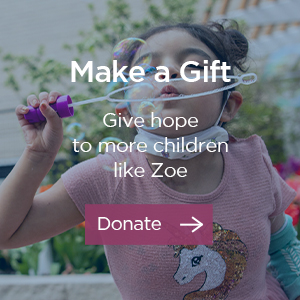Bio:
Considering everything Zoe has gone through in her seven years of life, her outlook is remarkable. Rarely in a bad mood, the 9-year-old loves to dance and play practical jokes on her friends and family.
For the first nine months of Zoe's life, she was a quiet baby who slept a lot. But then one night she threw up and slipped into a coma. Zoe was subsequently diagnosed with propionic acidemia, an inherited condition in which her body cannot break down certain proteins and fats. Typically diagnosed through the newborn screening at the hospital, her case at the time was mild enough that it slipped through undetected. But the buildup of ammonia in her body was silently damaging her tiny body.
After a stay at a hospital near their home in northwest Arkansas, her condition improved and she managed the metabolic disorder, for which there is no cure, through a low-protein diet and medication. At age 5 she was diagnosed with cardiomyopathy that was treated with more medication, but when Zoe was almost 7, her heart health rapidly declined and she went into heart failure. The family hoped to find the answer at a hospital closer to home but were told the transplant program could not accommodate the heart and liver transplant Zoe so desperately needed.
St. Louis Children's Hospital could do both. Zoe arrived for her consultation in October 2020 and after spending a few weeks at St. Louis Children's, the Heart Center team decided she could return home to Arkansas to give her heart some time to recover on its own and delay a transplant if possible.
Within a few weeks of returning home, the unthinkable happened — Zoe contracted COVID-19. Her already weakened heart couldn't handle the virus and she was rushed back to St. Louis Children's, where she spent 40 days in the pediatric intensive care unit (PICU) on extracorporeal membrane oxygenation (ECMO). As 2020 came to an end, her care team placed her on the registry for a heart and liver transplant.
Unfortunately, there is no bridge to transplant device that is approved for mobility in a child Zoe's age and size, so she could not leave the hospital while she waited for a heart and liver to become available. In the meantime, Zoe and her family made St. Louis Children's home.
Because of Zoe's long-term hospitalization, it was vital to keep her both physically and mentally strong as she awaited her transplant. Physical therapy, occupational therapy and expressive therapy were all part of her care plan, which kept her busy throughout the day. She also spent time with the St. Louis Children's school teachers, who connected with Zoe's elementary school back home to make sure she was staying on track academically.
The pediatric transplantation program has been leading the way thanks to its close association with Washington University School of Medicine and its ability to retrieve organs from around the United States due to its Midwest location.
In late Summer 2021, Zoe received the lifesaving transplant she and her family had been waiting for. Now back home in Northern Arkansas, she is back in school full-time and plans to visit Mexico this summer with her family. She also plans to attend Camp Rhythm — hosted by St. Louis Children's Hospital for children with heart defects — for the second year in a row!
|

